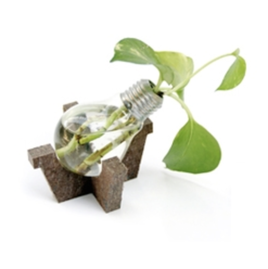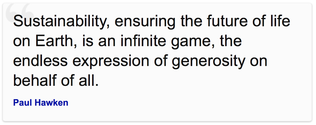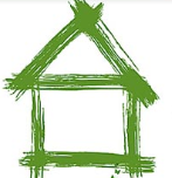
Beginning at least two decades ago, a well known Florida interior designer - and now member of DAASE - Bernadette Upton advocated about the importance of creating sustainable environments. Today her words rings true more now than ever. In fact, she and her firm, EcoDecor, were doing sustainable designed spaces long before it was "the thing to do."
“Green design” has become more popular but also more important to the world. With only a limited amount of available resources on the planet and more and more people on the earth, choosing building products, furnishings and fixtures that meet a standard of excellence and performance is just one part of the green equation.
Nowadays, it is important to incorporate recycled materials in the design plan and choose items that can be remade into other products when their life cycle is over. All of this suggests responsible decisions that will leave the planet with adequate resources to continue to sustain life for future generations.
There are numerous new “green” products that have been introduced in the last few years. One of the newest products is a commercial wallcovering that is not only flame resistant and stands up to heavy wear but is made from recycled paper and newsprint.
• Being green can also mean something as simple as the type of paint for the walls.
Most paints release volatile organic compounds into the air as they dry. Known as VOCs, they are harmful to the atmosphere as well as the indoor air quality of the home or office. This can be especially troubling for those who have lung disease like asthma.
Consider natural fibers for fabrics for window and floor coverings. Choose manufactured products that are domestically made since it takes a lot of oil to ship goods from places a long distance like China.
“Green design” has become more popular but also more important to the world. With only a limited amount of available resources on the planet and more and more people on the earth, choosing building products, furnishings and fixtures that meet a standard of excellence and performance is just one part of the green equation.
Nowadays, it is important to incorporate recycled materials in the design plan and choose items that can be remade into other products when their life cycle is over. All of this suggests responsible decisions that will leave the planet with adequate resources to continue to sustain life for future generations.
There are numerous new “green” products that have been introduced in the last few years. One of the newest products is a commercial wallcovering that is not only flame resistant and stands up to heavy wear but is made from recycled paper and newsprint.
• Being green can also mean something as simple as the type of paint for the walls.
Most paints release volatile organic compounds into the air as they dry. Known as VOCs, they are harmful to the atmosphere as well as the indoor air quality of the home or office. This can be especially troubling for those who have lung disease like asthma.
Consider natural fibers for fabrics for window and floor coverings. Choose manufactured products that are domestically made since it takes a lot of oil to ship goods from places a long distance like China.

Selecting lighting that is energy efficient will not only save on the light bills but will reduce the American reliance on foreign oil that power electric plants. Compact fluorescents and LED-type light fixtures are quickly becoming popular by designers and architects as well as homeowners.
In fact, LED lighting is a great choice when light fixtures are up in very high ceilings and are difficult to change since some LEDs will last for 50,000+ hours. (That’s about ten to twelve times longer than a standard light bulb.) The key is choosing the type of fixture and bulb that will mimic the warm color of incandescent lighting so as to avoid a blue tint to the interior.
So when planning for the future, choices are simple and costs are competitive to other “non-green” products. And make a commitment with your design team to select and purchase items that can be recycled and made into something else when they are ready to be replaced.
In fact, LED lighting is a great choice when light fixtures are up in very high ceilings and are difficult to change since some LEDs will last for 50,000+ hours. (That’s about ten to twelve times longer than a standard light bulb.) The key is choosing the type of fixture and bulb that will mimic the warm color of incandescent lighting so as to avoid a blue tint to the interior.
So when planning for the future, choices are simple and costs are competitive to other “non-green” products. And make a commitment with your design team to select and purchase items that can be recycled and made into something else when they are ready to be replaced.

 RSS Feed
RSS Feed